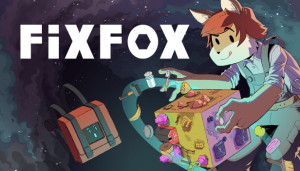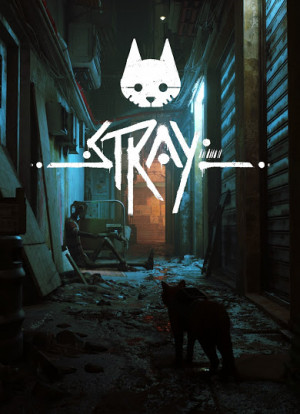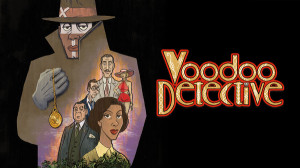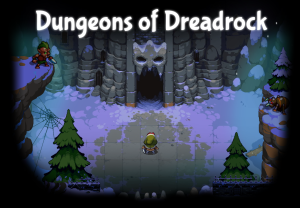Papetura: Behind the Paper Art interview
__big.jpg)
Get ready to dive into the captivating world of paper art with the developer behind the critically acclaimed game, Papetura. Join us as we speak with Tomasz Ostafin, the mastermind behind this one-of-a-kind puzzle adventure, set in a hand-made paper world filled with danger and mystery. Over the course of six years, Tomasz meticulously crafted every detail of the game, bringing his unique vision to life. With its PC release on Steam winning multiple awards, including Visual Art at CEEGA '21, Best Sound Effects in Adventure Gamer's 2021 Aggie Awards, and its upcoming release on Nintendo Switch, there's no better time to read about the passion and hard work behind this truly remarkable project.
Can you tell us more about your background in game development and how you got started in the industry?
The funny thing is, I never started working in the game industry. Back in the day, when flash games were popular, my hobby was to animate things in Flash, and making small games. This background got me going when Unity Engine came, and with tutorials, books and Google I’ve learned all the skills needed.
What inspired you to start working on Papetura and what motivated you to see the project through to completion over the course of six years?
Once I had played The Neverhood in childhood, there wasn't a way back, it just made me do it, the need to create a game from physical medium. Just when I forgot about that dream, Machinarium came out, and encouraged me to start working on something bigger. But what kept me going - probably desperation, and the idea that this is my purpose in life.
Can you tell us more about the process of developing Papetura as a solo project? What challenges did you face and how did you overcome them?
That’s the subject that many solo devs face, loneliness, burnout, overestimating our strength, doubts, no money... No worder, when we read about success stories, and people that made one game that became a success overnight. Reality is, that doesn't happen, making games without financing is, in my opinion, only a hobby, and I started treating it that way - this was way safer and healthier. On another aspect, which is loneliness, the best way is to team up with someone, in my case that was Tomas Dvorak and Juraj Mravec. We were working far away from each other, but this was enough to motivate myself.
You've mentioned that Papetura was a labor of love that took six years to complete. Looking back on the development process, is there anything you would do differently or any lessons you learned that you would like to share with other game developers?
I think that most devs should find their own place in the market. There are some that are making really small games, episodic or in bigger teams, or trying to finance their work through investors, crowdfunding or Patreon. There isn’t only one answer to how to survive, just don’t put everything on one card, because game release is always some kind of gamble. One lesson for beginners is - just start small, and don’t expect any money from it. Games made out of passion will be a lot better anyway.
What has been the most rewarding aspect of developing Papetura for you, and is there anything you would have done differently if given the chance?
During this development rollercoaster of ups and down, there were many things I didn’t know. Given a chance - I would just go to a different university, more game oriented. But on the other hand, there wasn’t really that kind back then, so it was like it had to be. During the development the most rewarding part was discovery of something new - how to make characters move, lights light up, just make things work. And in the end, the most rewarding part was audience reception, and seeing people play the game, alone or with their children.
What inspired the decision to create a world entirely made of paper for Papetura?
The inspiration is unknown, but I suspect that it was architectural models and marble sculptures. The thing is - only bright paper was used, different kinds that have different properties and texture. Ultimately paper models were pure form, and the only thing that gave them color and depth is light.
The hand-made paper assets in Papetura are truly stunning. Can you describe your process for creating them?
Two approaches emerged from trying different workflows. Both of them begin with a sketch, and prototype of the level. After that came paper model making. First approach - you can see in the first level. The level is designed in 3D, all the structural elements are then layed out and printed out as a template. This is great for parametric and geometrical levels where precision is required. Other approach - you can see at pond level. It’s just LeT’S Do THiS way, where everything is made as it goes, very organic and spontaneous. Some designs required LEDs and special lighting, and in the end all of them were lighted with continuous lights, spots, softboxes, etc., shot by camera and voila!
The soundtrack for Papetura, composed by Floex - Tomas Dvorak, is an integral part of the game's atmosphere. How did you collaborate with the composer to create the perfect musical accompaniment for the game?
This was my first time working with a composer, so my approach was just to completely trust Tomas. He is a great composer with vast knowledge, and that saved the game. We were working remotely, and our workflow was based on gameplay videos, design docs and meetings of course. The main goal to solve was - to create a soundtrack that evolves with the story, and it’s not based on location.
The player controls Pape and Tura as they navigate through nine different environments. Can you tell us more about the design and inspiration behind these environments and how they contribute to the overall atmosphere of the game?
Environments are really weird, aren’t they? To my surprise they are working just fine, even though they are not typical cities, roads or houses... The inspirations came from nature, microbiology, so that’s why you can see many organic shapes. All of them are also simplified to not overwhelm the eyes. All the designs are just ‘imagination going wild’; this makes the game even more personal, and some think that it is more an art piece than a game - this was a negative comment on Steam, but I love it.
Papetura is described as an atmospheric adventure game with a focus on exploration and puzzle-solving. How do these gameplay elements come together to create a meaningful and immersive experience for players?
That’s the question that keeps me up at night...The answer is the sum of what I’ve learned through all these years, and Papetura has not always done this the right way, but I tried. One of the simpler answers is - let the people play and see all the flaws. Because the flaws are what takes you away from immersion. The game needs to be intuitive, give you challenges and not be frustrating at the same time. In Papetura there is a huge emphasis on atmosphere, so the balance is tipped in the direction of exploration, which was a gamble that many players liked, but more puzzle-oriented players missed in Papetura. Final thoughts about this are - I have no idea, it’s just gut feeling.
Can you give us an example of a particularly challenging or interesting puzzle you are most proud of and why?
One of the well-thought-out levels is the first one. It was designed later, when I had some more insight into how to design stuff. What makes it challenging is - it introduces all of the characters, level looks, and game mechanics at once, walking, interacting with objects, shooting, and what to do in the level. This needed to be so intuitive that all kinds of players would know what to do - and after many attempts it turned out that even my non-gamer friends managed to complete it.
What can players expect from the story in Papetura? How does it unfold as they progress through the game? What future plans do you have for this world?
The story in Papetura is quite simple, and is uncovered as we progress in the game. What happens in the game is something that I needed to just express, as there is some very personal stuff. That said, it’s probably the end of the story, no sequels to that. The monsters that threaten Pape and Tura's paper paradise are described as "dark, flaming".
Can you tell us more about these enemies and how they fit into the game's overall narrative?
There are a couple of monsters there; some are just victims of the main bad guy, or some are just unfriendly at the beginning, but that changes. The main bad guy wants to see the world burn, and uses any means necessary. Some people think that Shadow also has a sad backstory, and they are not wrong, but this will stay a mystery.
Can you discuss the decision to release Papetura on Nintendo Switch and any plans for bringing the game to other platforms in the future?
Besides the dream becoming true - releasing on Nintendo - it just felt right. I experimented with pad controller support, and it just worked! On the other hand, I haven’t decided to make Papetura on tablets; touch controls are something that doesn’t fit into the game. The release on consoles is a little bit late, that’s my lazy side after the PC release! Xbox and PlayStation coming very soon!
How does the experience of playing Papetura differ on Nintendo Switch compared to other platforms?
Some players say that playing Papetura in handheld mode is like having a little paper world in your hands, so maybe it will be just that one feeling that differs from the others! Also the Switch version has especially designed vibrations that other controllers lack.
What can players look forward to in terms of post-release support for Papetura? Will there be any updates or additional content released for the game?
I’ve updated Papetura a million times so far, minor bugs, animations, graphics, controller support, some gameplay elements...and have we reached the point where there is nothing to update - we will see! I don’t plan any additional content yet.
Are there any other projects that you are currently working on that you can tell us about?
There is one idea that needs to be explored, and I’m currently at the prototype phase. My wish is to put all what I’ve learned from Papetura into something new! Fingers crossed.






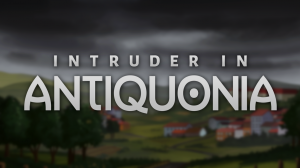
__medium.jpg)
